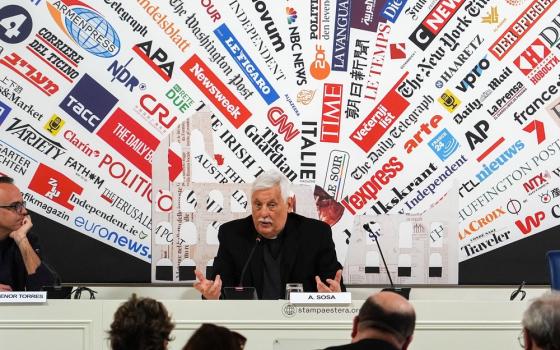Our next-door neighbors built their house in 1951. Now, Bob is dead and Mildred has moved to a retirement home and the house is for sale.
Architect Elizabeth Wright Ingraham, the granddaughter of Frank Lloyd Wright, designed the house. The low wooden structure opens onto a lush, walled garden, shaded and sheltered by a large linden tree. Apricot trees are espaliered along the western bricks separating our houses.
Doors open from the living room, the study and the dining room onto the garden. Big windows and walls of glass bring the light indoors.
Curiously, most of the windows do not open, and the ones that do open are small and set up high in the walls.
 Wright Ingraham has written, “Architecture is a message a civilization leaves about itself to the future.”
Wright Ingraham has written, “Architecture is a message a civilization leaves about itself to the future.”
I think the message mid-century America was leaving about itself is, in part, about mastery and control. The windows could be decorative rather than functional, for, clearly, this house, so carefully designed and constructed, was meant to be cooled by quiet, central units. The quiet, central units would be powered by our inexhaustible supply of electricity and natural gas. Inexhaustible, and cheap.
And perhaps the question of central air-conditioning was not much discussed beyond the wonder of it, the marvel that such a small box could maintain a constant temperature inside, no matter what the weather was outside. Because in 1951, the year the house was built, Colorado Springs set a record, still unbroken, for the coldest day in June: On the 12th, the high was 32 degrees. The temperature right now is 94. Ninety-four, and climbing.
As I write this, the for-sale sign next door stands in the haze of the Waldo Canyon fire. Garden of the Gods Park is closed. Palmer Park is closed. The Pikes Peak Highway is closed. “The world’s highest cog railway,” some six miles from my house, has been taking visitors to the top of the Peak since 1891. It is closed. Highway 24, the road going west into the mountains, is closed. The high school nearest my neighborhood grocery store has been turned into a command center for the firefighters. Whole towns and neighborhoods have been evacuated.
We stood in the parking lot of the cathedral yesterday morning before Mass and watched the smoke rise from the mountains. From time to time we saw flames break through the smoke, bright orange against the gray. We could see planes circling the fire, dropping the near flame-colored retardant.
The fire today is zero percent contained, and growing. We’re expecting a high of 100. The wind is blowing out of the southeast at 13 miles per hour.
 Yesterday, June 24, afternoon temperatures reached 100 degrees, for only the fifth time in city history. Today will make the sixth time. By the end of the week, who knows how often that record will be broken?
Yesterday, June 24, afternoon temperatures reached 100 degrees, for only the fifth time in city history. Today will make the sixth time. By the end of the week, who knows how often that record will be broken?
June is not typically the hottest month of the summer here.
The fire season has just begun.
Colorado Springs, which sits 6,035 feet above sea level, is sunk in smoke. Health officials warn against going outside and breathing in the poor-to-unhealthy air. Go to the mall, they tell us, or take in a movie. Get out of the air and into the air-conditioning.
This advice is given to a city that grew, in part, because of its reputation for clean, healthy air. Tuberculosis patients, locally known as “lungers,” came here to rest and recuperate in the foothills of the Rocky Mountains. The Glockner Tuberculosis Sanatorium, built in 1890, was the site of the first bronchoscopy performed west of St. Louis. Surgeons fighting the new round of antibiotic-resistant strains of tuberculosis still come here, to Colorado, to learn the delicate surgical technique for removing diseased lung tissue without infecting healthy tissue.
Today we are a city where respiratory patients, as well as the very old and the very young, must take cover.
It has been so many years since my husband and I turned on our central air-conditioning unit that we weren’t sure it still worked. Our lot is heavily treed and we have generous eaves to shield our windows from the sun. Orange blossoms and lilacs shade my office windows. The windows above my kitchen sink look out on trellised roses and clematis hanging above a ninebark bush on which the birds congregate. We prefer the breezes and the faint vanilla smell of ponderosa pines to the odor-free refrigerated air.
But yesterday, with the summer sky growing dark and the smell of a campfire filling our house, we shut the windows we would not usually close until September. And we turned on the massive refrigerator.
Wright Ingraham has written, “Architecture is the language of intervention.” I suppose she means that we alter the landscape, we intervene, when we dig our foundations and build our houses, erect our fences and plant -- in the case of our own dear garden -- the magnolia and the beech and the maple and the oak that were not known in this high, dry land before the settlers came.
Certainly our neighbors’ house, the scene of such goodness and joy, stands as an example of architectural intervention, though perhaps not in the way its designer intended. For it turns out that inexhaustible and cheap are not accurate descriptions of water or electricity or oil. Natural gas comes closest to that description today, but the cost of retrieving it is high, in both human and monetary terms.
We’re going to wait out the fire in our air-conditioned house, where it is always 78 degrees. When Waldo Canyon is no longer burning, we’ll open the windows again. Of that much I’m certain. I hope we’ll also reopen the conversation about the “intervention” of architecture and the “message a civilization leaves about itself to the future.”
[Melissa Musick Nussbaum lives in Colorado Springs, Colo. She is coauthor, with Jana Bennett, of Free to Stay, Free to Leave: Fruits of the Spirit and Church Choice.]



